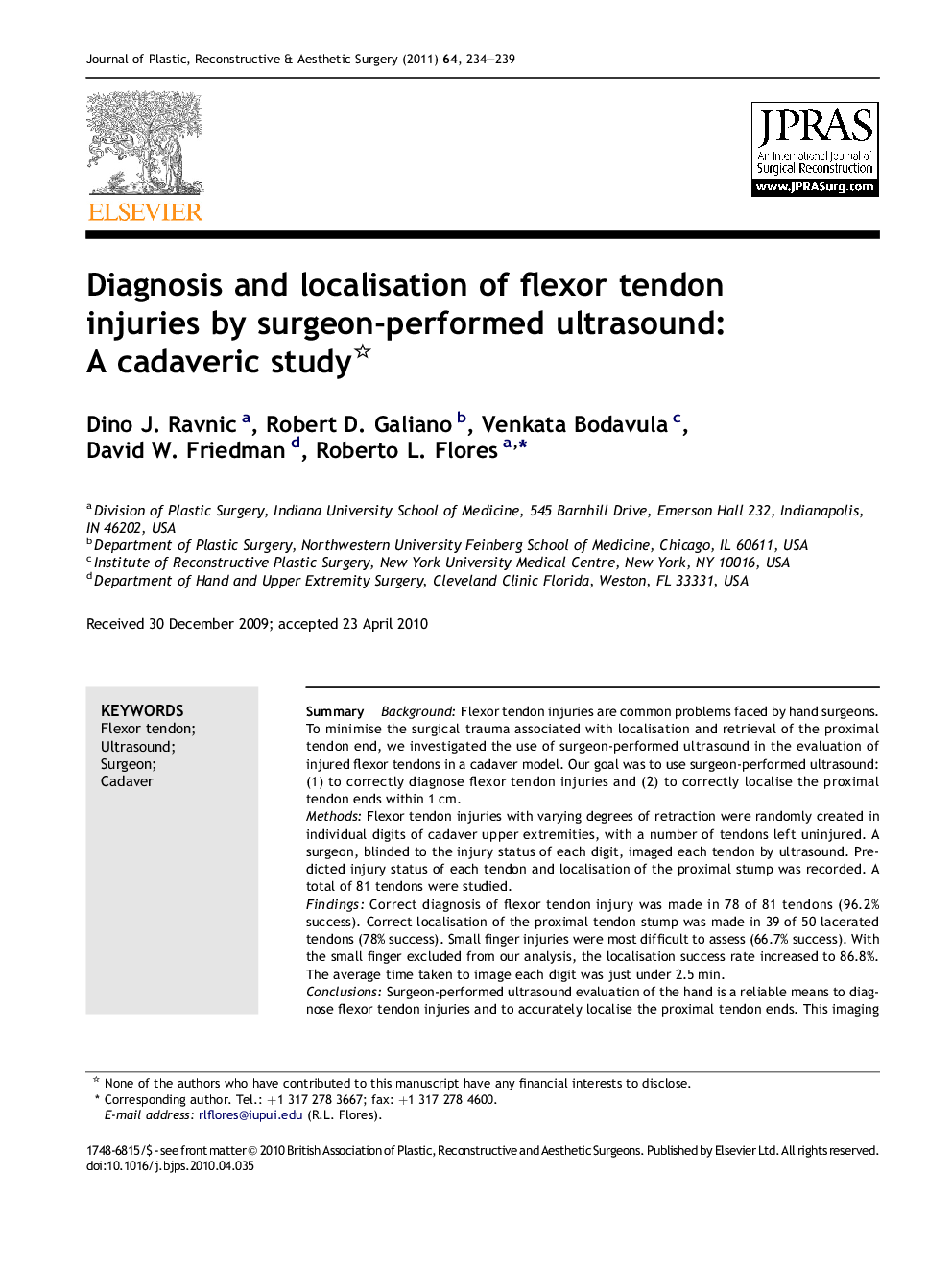| Article ID | Journal | Published Year | Pages | File Type |
|---|---|---|---|---|
| 4119445 | Journal of Plastic, Reconstructive & Aesthetic Surgery | 2011 | 6 Pages |
SummaryBackgroundFlexor tendon injuries are common problems faced by hand surgeons. To minimise the surgical trauma associated with localisation and retrieval of the proximal tendon end, we investigated the use of surgeon-performed ultrasound in the evaluation of injured flexor tendons in a cadaver model. Our goal was to use surgeon-performed ultrasound: (1) to correctly diagnose flexor tendon injuries and (2) to correctly localise the proximal tendon ends within 1 cm.MethodsFlexor tendon injuries with varying degrees of retraction were randomly created in individual digits of cadaver upper extremities, with a number of tendons left uninjured. A surgeon, blinded to the injury status of each digit, imaged each tendon by ultrasound. Predicted injury status of each tendon and localisation of the proximal stump was recorded. A total of 81 tendons were studied.FindingsCorrect diagnosis of flexor tendon injury was made in 78 of 81 tendons (96.2% success). Correct localisation of the proximal tendon stump was made in 39 of 50 lacerated tendons (78% success). Small finger injuries were most difficult to assess (66.7% success). With the small finger excluded from our analysis, the localisation success rate increased to 86.8%. The average time taken to image each digit was just under 2.5 min.ConclusionsSurgeon-performed ultrasound evaluation of the hand is a reliable means to diagnose flexor tendon injuries and to accurately localise the proximal tendon ends. This imaging modality may limit the need for extensive surgical exploration during flexor tendon repair. We do not recommend using this technique to image flexor tendon injuries of the small finger at this time.
